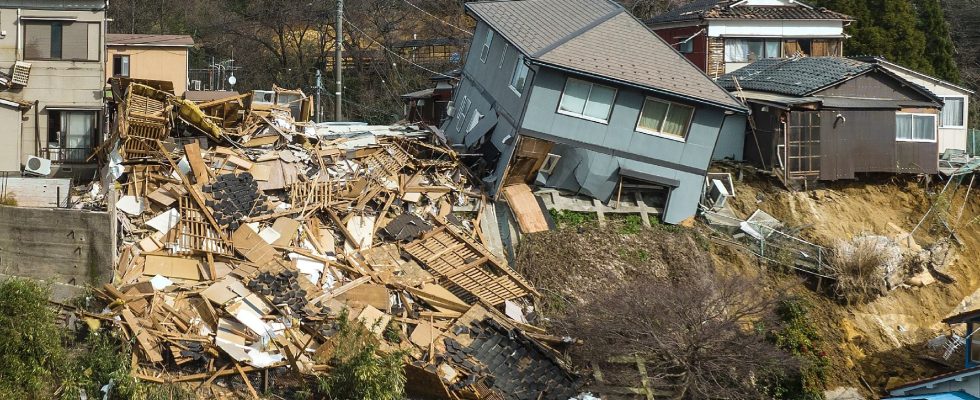A race against time is being waged on Tuesday, January 2, in Japan to find survivors after an earthquake which devastated the Noto peninsula, in the center of the country, on Monday, killing 30 people according to a new provisional report.
Authorities in the Ishikawa department, which includes the Noto peninsula, reported on Tuesday 30 dead, 14 seriously injured and “many” minor injuries.
“It was such a powerful shock,” Tsugumasa Mihara, 73, told AFP as he queued with hundreds of other residents of Shika, a small town on the Noto peninsula, to collect supplies. drinking water tanks at the town hall. “What a terrible way to start the year,” he added.
Occurring Monday at 4:10 p.m. (8:10 a.m. in France), the main earthquake among more than 150 significant tremors felt until Tuesday morning was recorded at a magnitude of 7.5 according to the American Institute of Geophysics (USGS) and 7.6 according to the Japan Meteorological Agency (JMA). This earthquake, felt as far away as Tokyo, 320 km as the crow flies from Noto, also caused immense material damage and a tsunami on Monday on the coast of the Sea of Japan, which ultimately remained of low magnitude, waves up to 1.2 meters high having been measured. The tsunami risk level, which initially triggered a rare maximum alert from the JMA, was then downgraded and then definitively lifted on Tuesday at 10 a.m. (2 a.m. in France) by the same agency.
“Hold on! Hold on!”
The extent of the destruction was revealed as the sun rose on Tuesday: everywhere, old houses and collapsed buildings, cracked roads, capsized or stranded fishing boats, and persistent fires amid smoldering ruins. .
The earthquakes caused “numerous casualties” and significant material damage, Japanese Prime Minister Fumio Kishida said on Tuesday. “We must race against time” to save lives, he added.
A large fire notably ravaged part of the city center of Wajima, a small historic port in the north of the Noto peninsula known for its artisanal lacquer products. A six-story commercial building also collapsed due to the earthquake. “Hold on! Hold on!” shouted firefighters as they made their way through the rubble using an electric saw and by crawling, according to Japanese television footage filmed in Wajima.
Firefighters are overwhelmed, a Wajima emergency services official told AFP on Tuesday. “We’re dealing with several fires,” and the number of emergency calls and damage reports continues to rise, he said.
More than 32,000 homes remained without electricity on Tuesday and many towns in Ishikawa department no longer have access to drinking water. More than 60,000 residents had received evacuation instructions on Monday, according to the national fire and natural disaster management agency. A thousand soldiers from the Japan Self-Defense Forces (JSF), as well as more than 2,000 firefighters and some 630 police officers have arrived as reinforcements in the disaster areas, Fumio Kishida said on Tuesday. The Prime Minister also announced on Monday the sending of essential goods such as drinking water, food, blankets, gasoline and even fuel oil, by plane or by boat.
Imperial New Year greetings canceled
Faced with the disaster, the traditional public New Year greetings by Japan’s Emperor Naruhito and his family, which were to be held in Tokyo on Tuesday, were canceled.
Several damaged highways were closed to traffic and high-speed train (shinkansen) traffic between Tokyo and Ishikawa, interrupted since Monday, was expected to resume Tuesday afternoon.
Located on the Pacific Ring of Fire, Japan is one of the countries with the most frequent earthquakes in the world. The archipelago therefore has extremely strict construction standards, so modern buildings are generally resistant to powerful earthquakes, but older houses much less so.
Japan is haunted by the memory of the terrible 9.0 magnitude earthquake followed by a giant tsunami in March 2011 on the northeast coast of the country, a disaster which left some 20,000 dead and missing. This disaster also led to the Fukushima nuclear accident, the worst since Chernobyl in 1986. “No anomaly” was detected in the country’s nuclear power plants, the Japanese nuclear safety authority (NRA) assured on Monday. ).
